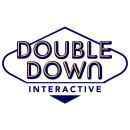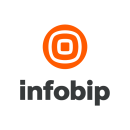
Timeboxes, scrum board previews, Slack bots and “after parties.” These are a handful of the various tools and approaches Seattle tech companies use to keep their sync-up meetings as efficient as possible.
With these tools, meetings that are similar in nature can look very different among the three companies we spoke to. Mobile messaging platform OpenMarket and casino games producer DoubleDown Interactive both have daily syncs, but the former encourages attendees to skip speaking if they don’t have updates; the latter has post-meeting “after parties” where applicable attendees can discuss meeting topics at length without the whole team. Insurance technology company Assurance replaced its daily syncs altogether with Slack bot updates driven by team members.
But even with the many differences in structure, all three companies use an agenda to streamline their meetings. And most importantly, those structures are built to respect each attendee’s time and get them back into their workflows as soon as possible.
“We have a few different types of syncs focused on different audiences and depth of discussion,” Chris Chamberlain, DoubleDown Interactive senior producer manager, said.
There are a number of sync-up meetings at the casino games company, and each one has an agenda that a producer guides attendees through. However, within those structures, Chamberlain said producers inject their personalities into the meetings to keep attendees engaged.
What does a typical sync-up look like for your team?
Morning team syncs are generally under 15 minutes, feature 20 to 30 people and take place Monday through Thursday. The meetings are the same every day and act as a quick status update on the latest build we’re working to ship. Everyone also quickly shares what they are focused on and if they are blocked. Afterwards, small groups may stick around for an “after party” to discuss topics in more detail that don’t require the full team.
There are also smaller, semi-weekly, feature-specific syncs that have 10 to 15 attendees and run up to 45 minutes. They are focused on building one thing and all disciplines working on the feature can weigh in. Finally, we have a leads meeting where managers and feature leads meet twice per week to share information across disciplines and projects, remove roadblocks and solve problems.
Each of our producers uses their unique personalities to great effect in our various standups.”
What’s one thing you’ve done to improve the effectiveness of your meetings?
We’ve learned a lot about standups in the two years that we’ve been working on our game “DoubleDown: Fort Knox.” Initially, we had long meetings that were open to anyone. Sprint planning our first year dragged the team into a room — sometimes for two hours — and halted development planning. Then we scaled the time and audience appropriately for each meeting. We took longer discussions to “after parties” or different meetings.
Release planning is much more “on call,” where leads call on individual contributors in 15-minute bursts prior to meetings to plan out the work. We try to respect developers’ and content creators’ time, so having a producer drive the meeting helps us stay focused.
How do you keep employees engaged during sync-up meetings?
Each of our producers uses their unique personalities to great effect in our various standups. Daily standups with Charles are short and efficient. Prior or post-standup, he often shares pictures of his daughter or his latest photo-shopped creation. Howard has an endearing personality and thanks his teams often for their work. He also has a dry sense of humor and uses measured sarcasm to crack people up. Jeff — a sharp, certified scrum master — has very efficient standups, but he is quick to respond with jokes as well.
All the producers get to know the people they work with on personal levels and what motivates them, a bit of what’s going on outside of work, etc. That personal touch and humor help to engage our teams and make us feel mutually invested in the success of our work.
Rather than having a traditional daily team sync, Senior Software Engineer Chris Wallace said the dev team at Assurance relies on a Slack bot to keep the team members informed on what everyone is working on. Efficiency-improving practices like that and others help developers at the insurance tech company maintain uninterrupted workflows.
What does a typical sync-up look like for your team?
Our team spans three time zones, so our sync-ups often need to stay as asynchronous as possible. Our team adopted a hybrid model where we take advantage of working remotely. We run some meeting components in chat and others in person or over Zoom.
Each morning, a Slack bot from Standuply asks each team member for “stand-up details,” like what they worked on yesterday, the work ahead and any blockers they’re facing. Those details are published on their behalf to our team Slack channel. It gives us insight into what everyone is working on without interrupting the team’s flow. Every week, our team syncs for an hour-long planning session where we do backlog grooming, chat with each other and realign our priorities.
We aggressively try to respect people’s time, which means that our meetings do not run long.”
What’s one thing you’ve done to improve the effectiveness of your meetings?
Our team made three decisions that have drastically improved our sync-up processes. The first is that we keep a Zoom room open constantly for folks to hang out in. The room — called #NeverWorkAlone — gives team members a place to squat and exchange ideas when they pop into their heads. It helps because when our weekly sync-up starts, it’s not the first time we’ve actually talked all week.
Secondly, our team focuses on big project epics, with each area of work assigned to two or more team members. Two people jointly give their update in our big meetings and the other members have a high-level idea of the work actually getting done.
Finally, our team timeboxes everything. We aggressively try to respect people’s time, which means that our meetings do not run long. Timeboxes keep us engaged by preventing the “infinite sprint planning” meeting dreaded by all.
The daily sync-up meetings at mobile marketing company OpenMarket are geared toward speed and efficiency. Senior Technical Delivery Manager Dennis Orji said team members quickly share updates from the last 24 hours with the help of scrum boards. But if they don’t have any updates, they don’t have to share.
What does a typical sync-up look like for your team?
During our daily standup, each team member briefly explains what they did the previous day and their plan for the coming day. Other team members listen carefully to the updates to ensure there are no potential impediments to their tasks. They can identify and suggest potential improvements. The meeting ends with an open floor where anyone could ask for help with their work or flag issues that require the attention of the team.
We encourage team members with no substantial update from the previous day to say they have nothing new to report and skip speaking.”
What’s one thing you’ve done to improve the effectiveness of your meetings?
With working from home in full gear at Openmarket — and the distractions that come with it — we found that displaying our scrum boards a couple of minutes before meetings start allows team members to recollect their thoughts on the work they did the previous day. It’s helped team members provide their updates quickly and accurately.
How do you keep employees engaged during sync-up meetings?
We encourage team members with no substantial update from the previous day to say they have nothing new to report and skip speaking. It removes the presumption that they must say something during the sync meeting. That way our updates are concise, valuable and do not sound like the team member is filibustering.













